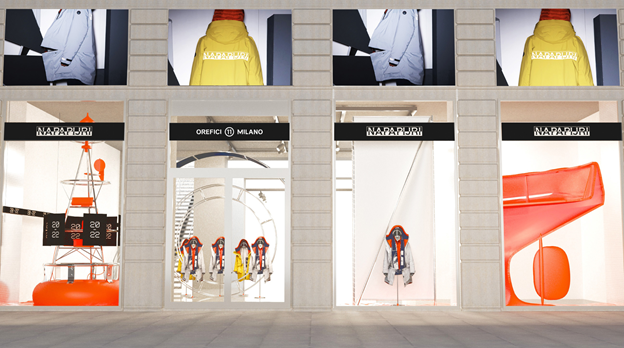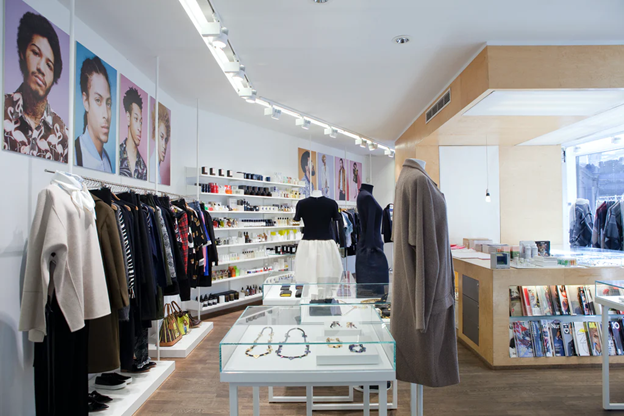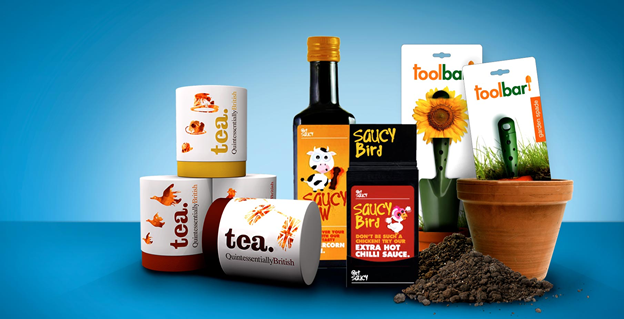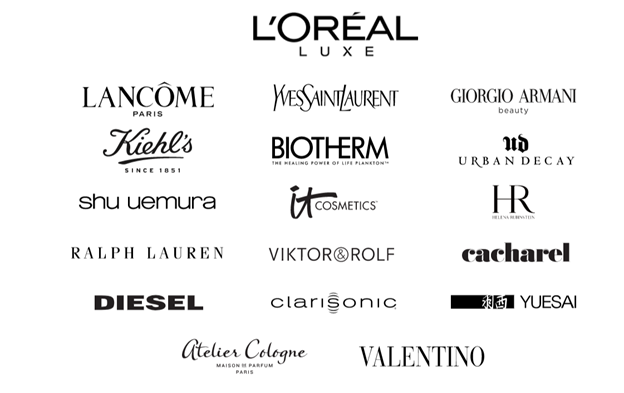What is Multi-brand retail? Examples, Tips, and more!
The new world has had huge benefits, the variety of the shopping system is one of the most evolving points. ECommerce has been retailers’ trendsetter that intensifies rivalry.
Shop owners are looking for new ways of attracting buyers, and some have taken the multi-brand retail route. This development has proven to be extremely efficient in that it produces successful outcomes for traders.
Now, let’s find out more about multi-brand retail you want to hear. We guarantee that you will find the answer in our article if you are wondering if this style has been tailored to your needs.
What is a multi-brand strategy?

An enterprise has a multifamily approach as it has multiple brands or names in its product portfolio. A company could take a multi-brand approach to reach another audience or develop a luxurious line to call upon a buyer who is willing to pay for the product more. For example, Nestlé’s brand strategy includes KitKat and Nespresso, with more than 2000 different products.
Benefits of a multi-brand strategy
With the multi-brand strategy, there’s a high chance of propositioning your brand. You are more likely to generate loyal follow-up for your brand while building brand awareness. A consumer may acknowledge the parent company and rely on a clever decision despite never trying a product before.
They add value to the brand and want to buy other items that the company produces. Each brand has its character and culture and usually appeals to a particular audience through a multi-brand strategy. In certain cases, customers may not be aware of which brands belong to the same parent.
Also, it’s an ideal approach to keep the relationship with customers who stay inconsistent with one specific brand. Although a consumer is pleased with a product, it is not unusual for some people to choose if anything else is better for them. Companies with a multi-brand strategy will appeal without leaving the brand to these types of customers.
What are multi-brand retail stores?

Multi-brand retail stores are the ones that market many brands, as its name suggests. Contrary to single-brand retail in which shop owners set up the site to sell the same brand, multi-brand stores have a broad selection of items.
The typical multi-brand shopping is, for example, department stores or retail stores, where customers can readily identify and select different brands. Most retailers choose to sell their products on one platform with the explosion of eCommerce. Multi-brand retail stores give you goods and services of various brands at one location.
And as a buyer, it’s possible to enter, check for options, compare prices, features, specific requirements and choose the one that you want the most. Anything from various sectors may be a multi-brand retail shop. You have known many well-known multi-brand retailers, including Amazon or Walmart.
Advantages of multi-brand retail stores
Many brands have flourished and part of the retail industry’s success is due to the use of brand pages to create a positive buying experience for customers. This allows buyers to connect with the website more and online retailers will gain high confidence and loyalty from their customers.
Product diversification

A large selection of brands is the main benefit of multi-brand shopping. Consumers can easily choose them in both price and quality as the company offers different choices from various brands. This is an excellent alternative even for brand switches – buyers who always want to try multiple items.
Different categories allow multi-brand companies to meet consumer needs and meet the latest trends rapidly. Your shop will build dominance over your market and rivals with the variety of brands you have. Because of the fast upgrade and high market adaptation, customers will always prefer your store.
Better advertising opportunities
You will get help from your marketing partners for more than one brand in your shop. Besides, your power can be seen in more choices. Many brand partners can be a sign of a trustworthy business.
You may develop more marketing campaigns to get you closer to customers by providing more features to be publicized. This would certainly increase your page traffic as people want to learn more about your company’s potential.
Gaining competitive advantage
Although each product might be entirely branded and appealing to individual customers, you may make a competition. For example, there is less space to compete with brands if you have six different fragrance styles on the shelf. Consumers do not even know that your company produces all goods because each marketing is unique.
Optimal budget allocation

Working with other labels also means saving a great deal of money. First of all, you help them to sell more goods so that other companies can be charged an affiliate fee. This enables you to keep and update your store on the products for which you are operating.
Also, you don’t need to have stock as multi-brand retail because each brand will have its stock. The rental expense for the place and the staff to monitor its success are certainly saved.
Challenges in operating a multi-brand retail store
There are plenty of challenges and limitations every day in retail stores. These problems multiply or just worsen every day, which inevitably leads to companies suffering from growth deficiencies. That is why it is critical that companies gradually stop operating a multi-brand retail business.
Difficulty in separating brand identities

It isn’t easy to distinguish all brands and to provide a clear brand identity for each brand. You start competing with yourself rather than attracting different target groups if customers see your products interchangeable among them.
Brands must make more efforts internally to create and promote brand guidelines, as poor brand identities will lead to rivalry within the business.
Failure to keep product quality consistent
Another downside of multi-brand retail is that people can be harder on newer items because they demand a certain degree of quality when purchasing. If a new product does not meet the same standards, people could reject the product quickly and leave negative reviews.
Instability in product branding

One of the drawbacks of having many products is that one product can be more beneficial than the others. Companies should assess whether more time and marketing resources are worth investing in goods with lower performance.
In a contrasting scenario, brands might face a risk of being overlapped with one another. Customers will quit brand umbrellas if they decide they are confused about a brand and want to try out other items. For certain buyers, too many choices might not necessarily be the best thing.
Poor inventory management

Poor inventory management has drawbacks such as over/understock, product returns hub, distribution barriers, and more. When the stock management system is not transparent or straightforward, you finally order too many products and find it difficult to sell them or order too little and encounter enormous demands and deceived customers.
Workforce concerns
Ecommerce churn is a problem, and it can only be helped by an airtight solution. You can’t see the morale of your staff, the degree of happiness at work and more and lose more people every month without it. Training new hires is also a worthless action, as they leave after a couple of months.
Getting ready to overcome the challenges and have a successful multi-brand retail
After you have understood the incredible advantage of multi-brand retail, you must ask how to realize this vision. While these were the main issues of today’s retail stores, many more problems have been subjected to specifications and areas. Below are several recommendations on preparing and overcoming the obstacles for the new business.
Work with brands
It will not matter if a multi-seller store is unable to deal with brands. The first thing to do is contact the selected companies, which fit your style and offer their goods for sale. The process and benefit for each party are clarified and confidence between brands is strengthened to avoid scams.
Optimize workflows

You should draw up an exhaustive order and delivery schedule to ensure the process is smooth. As products of various brands are distributed, all transactions should be followed. You can also build satisfying client interactions with a simple workflow that will improve your turnover and influence quickly.
The quality of your services as a multiple-brand shop should be retained by keeping your business seamless and simple. With the integration of a safe and intelligent payment portal, customers can enjoy their shopping tour in your store.
Choose the right platform
The explosion of eCommerce is the strategy of many merchants right now for getting your multi-brand shop online. It is essential to build a trustworthy, scalable, and secure user-friendly platform. You can’t run an unreliable service in your company.
It is crucial that you are equipped with modern tools to optimize its efficiency, even when you select one platform. You should place your large database on the clouds to keep your information secure and organized. The power of extensions like Mega Menu and Shop By Brand should not be ignored by multi-brand retailers.
Streamline work process
The integration of market intelligence and analytical tools with the data you need to measure consumer behavior, maximize revenue, and overall satisfaction through personalization. Additional benefits include improved product recommendation, tailored targeting, customer experience optimization, and retention policies.
Focus on omnipresence channels

Omnichannel presence is where companies can find their brand and goods for consumers through all key social networks. This omnichannel presence creates a powerful online presence from Instagram, Facebook, and Tweet to YouTube, LinkedIn and Pinterest, and more, and sets a collective brand tone and voice to identify and connect with people. It helps you to be where your customer is so that you can take your goods directly to them at the opportune timing.
Examples of multi brand retail
For instance, L’Oréal, the world’s largest pure-play beauty company in revenue, reached its target of generating one-fifth of its online revenues by 2020 in the first quarter of the year. The goal was set in 2013 and at that time seemed optimistic.
“We had targets for the second stage of our digital transformation but Covid-19 has changed the landscape profoundly, so we have to reassess them,” says Lubomira Rochet, the Chief Digital Officer of L’Oréal.
L’Oréalclaimed to set up a global company where e-commerce is one half of the business and 80% of customer transactions take place online.
The global beauty company has now moved 70% of its advertising budget from 50% pre-pandemic to digital. The goal of this change is clear: to invest the majority in where your wealthy customers are - online.

The potential future of multi-brand retail stores

All of the issues we have addressed so far and their solutions contribute to a single theme in the future of multi-brand retail stores - digitalization.
Digitizing is the process of suppressing and replacing digital solutions with analog operating procedures and policies in your company. We are not talking just about replacing booklets with tablets and desktops, we are talking about a whole new digitization layer.
With developed IT infrastructure-backed solutions such as launching an app or an E-commerce platform, we recommend that you take your company to the next stage. When you introduce these, you also use technologies such as AI, chatbots, automation, voice recognition, machine learning, etc.
This is the future of your multi-brand business, of which we speak at the same time. This is what your company today needs for tomorrow’s profitability. It provides easier administration, optimized retention rates, greater benefits, and a healthy customer experience.
Final Words
The buyer is becoming more familiar with multi-brand stores. This is an intelligent technique for tackling product diversity issues and cost savings. You can select this route to get the company to a whole new stage based on realistic needs.
Focus on establishing a strong brand identity and creating confidence with your audience before attempting to create more brands when you start your company. If your brand recognition doesn’t grow high, all of your products will fail.
Above are a few examples of effective retailers that create a good experience with shoppers through the use of outstanding and beautiful brand sites. With proper execution, retailers will increase sales and benefit from stronger brand loyalists.
While multi-seller retail management can be overwhelming, the brands can witness good growth as they meet the obstacles that will ensure they pay for all their previous work. Then take the opportunity to achieve the greatest goals if that is your preference.
New Posts







